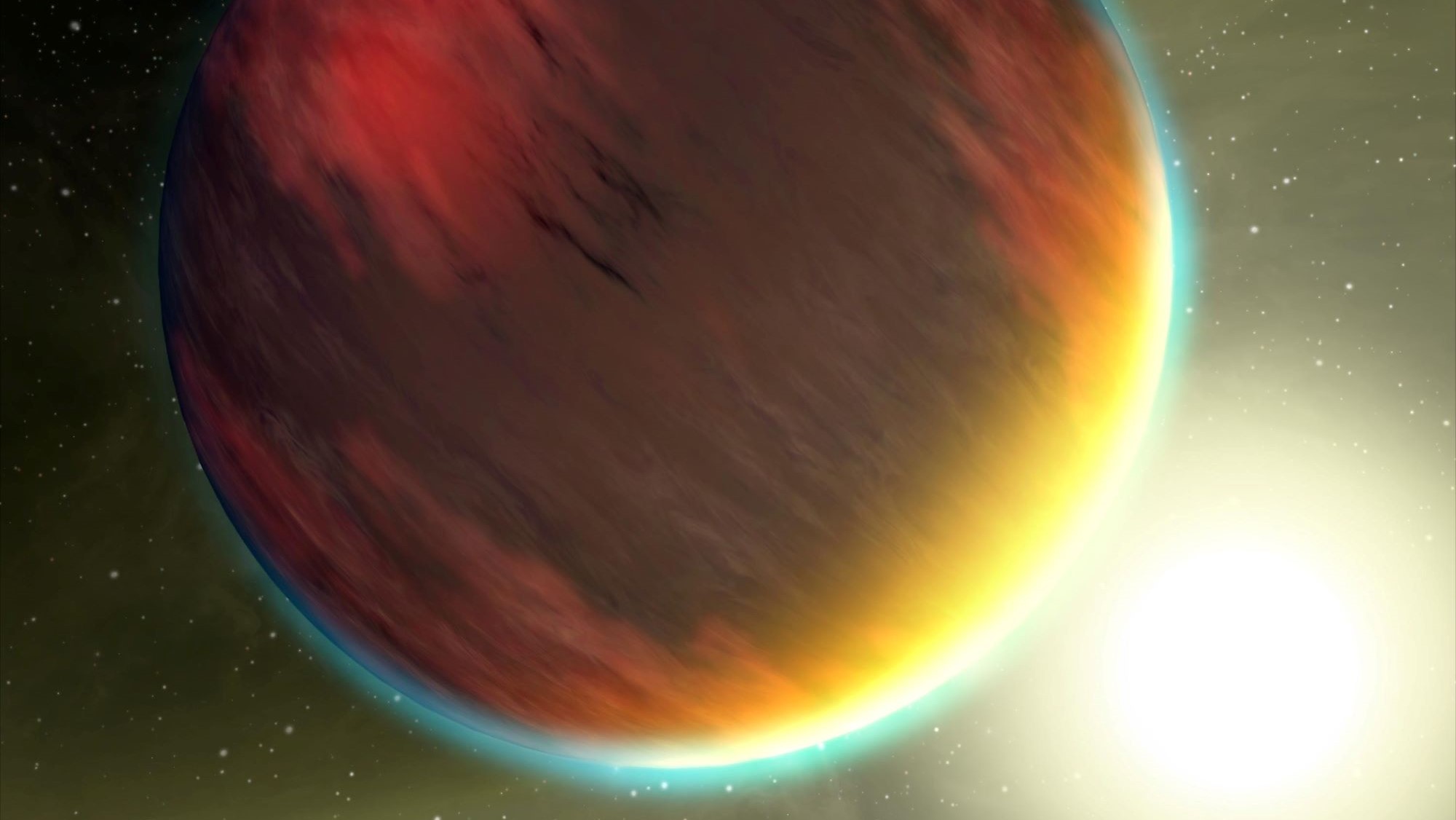

Our solar system has a suite of eight planets—rocky Mars and Earth, the ice giants, and massive gas planets—but other stars often have a much smaller group. Some suns have just one exoplanet orbiting around them. These loner worlds are often one specific type: A huge gas giant that orbits very close to its star, known as a hot Jupiter.
A newly discovered exoplanet, however, has challenged this view, showing that maybe not all hot Jupiters go solo. Last week, astronomers announced that a hot Jupiter orbiting a star 400 light years away has a pal: It shares its solar system with WASP-84c, a rocky planet so large it’s known as a super-Earth. This discovery was made public as a preprint, a research paper that has yet to undergo peer review, and submitted to the journal Monthly Notices of the Royal Astronomical Society for official publication.
Hot Jupiters are a weird kind of planet. We don’t have any in our own solar system. Until the first was spotted, astronomers never expected them to exist. Gas giants like Jupiter usually only form far away from their stars, where things are cool enough for gas to stay safe from blazing solar heat. If a Jupiter-like planet has to be born at a distance, then, how can it get so close to its star?
Astronomers have three main theories for how this happens. Two are gentle, and one is catastrophic. First, a hot Jupiter could move inward from its birthplace due to little gravitational nudges from the protoplanetary disk, a collection of dust and gas used to form planets in a star’s youth. Second, maybe we’re wrong about the theory that Jupiter-like planets must form far from stars. Instead, these planets are simply born where we see them. Both of these scenarios would allow hot Jupiters to have smaller friend planets hanging out nearby.
[Related: Ridiculously hot gas giant exoplanet is about to be swallowed by its dying sun]
But the third option is the most dynamic. Jupiters could form far out, but then encounter other planets that change the gas giants’ orbits. The gravity of the other planets would force a hot Jupiter into a stretched out, elliptical path, and then the gravity of the star would pull the gas giant in close, resulting in a circular, super-short orbit. In this violent dance, any low mass planets would be destroyed—creating the lonely hot Jupiter.
The best theory for the origin of this particular hot Jupiter, named WASP-84b, is the first—that a disk helped shepherd the planet through the solar system. Previous observations showed that the gas giant’s spin is aligned with the star’s, a sign that the large planet migrated within the protoplanetary disk instead of pinballing around with other planets. The discovery of super-Earth WASP-84c now adds more evidence to the case that this hot Jupiter formed with a nudge, not a planet-destroying bang—and that scenario may be more common than previously thought.
WASP-84c joins a growing list of smaller planetary buddies to hot Jupiters: WASP-47 b, Kepler 730 b, and WASP-132 b, to name a few. “The discovery of low-mass planetary companions like WASP-84c suggests that not all hot Jupiter systems formed under violent scenarios, as previously thought,” says lead author Gracjan Maciejewski from the Institute of Astronomy of the Nicolaus Copernicus University in Torun, Poland.
Maciejewski and his colleagues used NASA’s Transiting Exoplanet Survey Satellite (TESS) to spot WASP-84c. TESS hunts for exoplanets using the transit method, where a telescope watches a star for teensy dips in its brightness, caused by a dark planet passing in front.
[Related: A deep-space telescope spied an exoplanet so hot it can vaporize iron]
WASP-84c “was too small in radius to have been discovered by the original WASP survey, who discovered the hot Jupiter,” according to Caltech astronomer Juliette Becker, who is not affiliated with the new discovery. “It’s a great example of what TESS can do,” she adds.
With the transit method, astronomers can figure out a planet’s dimensions. However, to find out how much it weighs, they need different data, from another exoplanet-detecting technique known as the radial velocity method. When WASP-84c’s discoverers gathered this extra data, they determined that the planet has about 15 times the mass of Earth. Like our Blue Marble, it’s probably made of iron and rocks, too.
Jonathan Brande, a University of Kansas astronomer not involved in the discovery, thinks such discoveries will become even more common as the James Webb Space Telescope brings in new exoplanet data, deepening our understanding of how these planet pairs came to be. “I would not be surprised if we see further results on this system in the near future,” he says.
